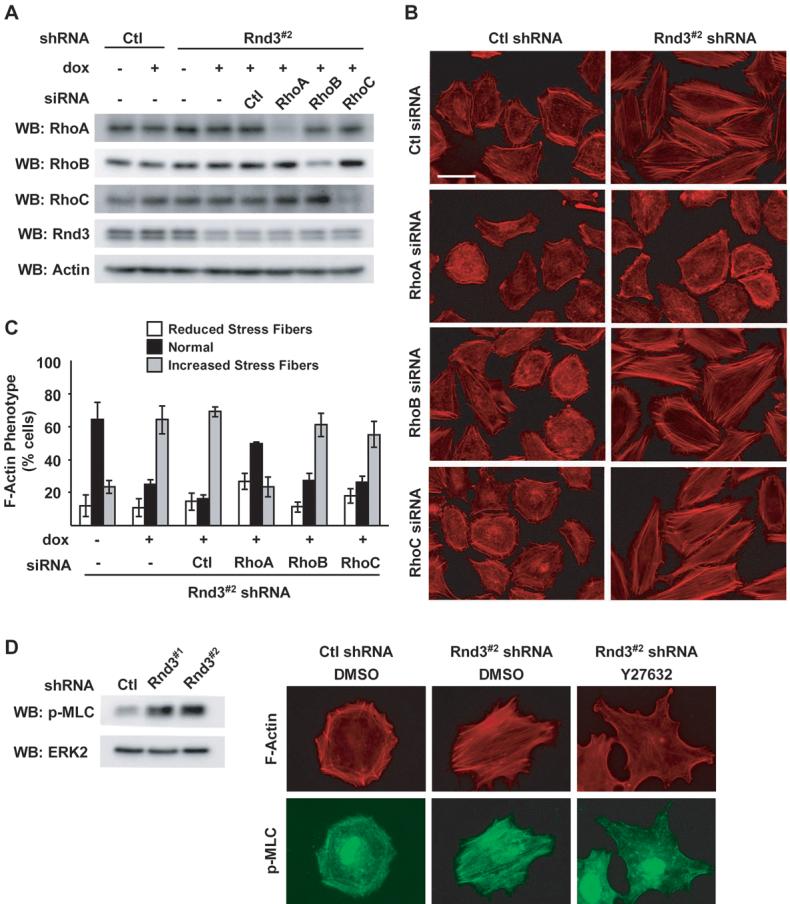Figure 2.

RhoA-ROCK signaling is required for Rnd3-dependent differences in actin cytoskeletal organization. A-C, Inducible WM793/TR/Rnd3#2 shRNA cells ± dox were transfected with siRNA duplexes targeting RhoA, RhoB or RhoC. A, Cell extracts subjected to western blot analysis using antibodies specific for RhoA, RhoB, RhoC, Rnd3 or β-actin. B, Cells fixed and processed to visualize F-actin organization. Bar, 50 μm. C, Quantitation of the F-actin phenotype shown in (B) (* P<0.05). D, Rnd3#2 and Ctl shRNA cells incubated with dox for 72 hours. Cells were lysed and analyzed by western blot for phospho-MLC and ERK2 or treated an additional two hours with 5 μM Y27632 or equal volume DMSO. Cells were then fixed and processed for indirect immunofluorescence using phospho-MLC (green) and TRITC-phalloidin to visualize F-actin (red). Bar, 50 μm.
